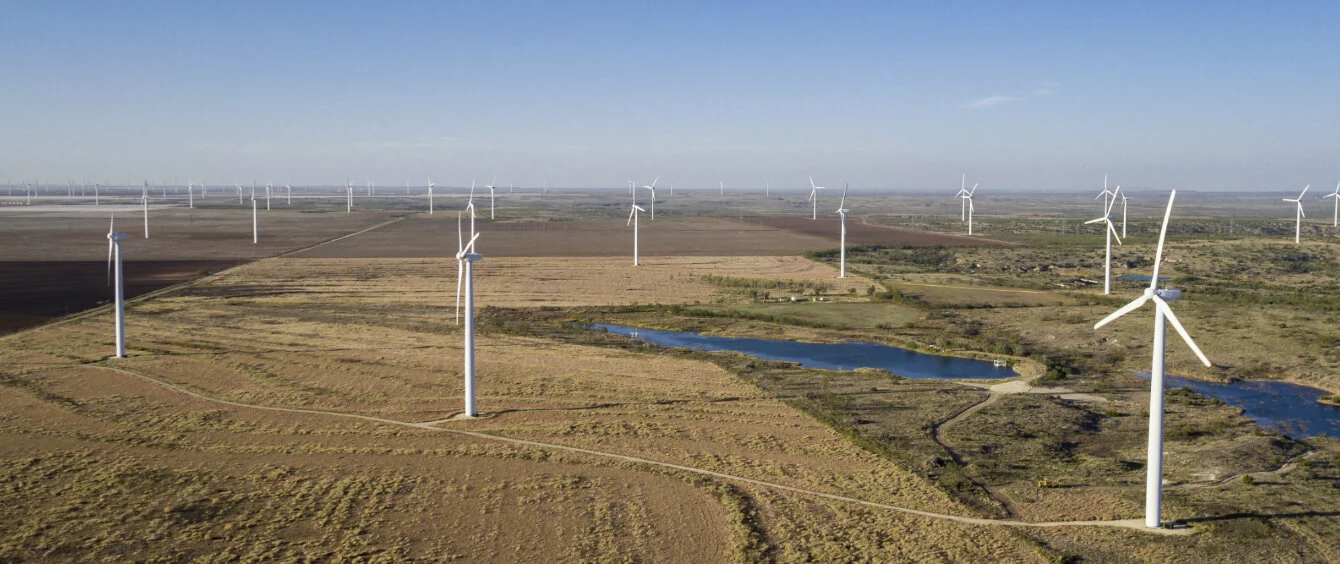US wind energy expansion broke the previous record in 2020, as shown by three reports recently published by the US Department of Energy. In their analysis of the US onshore and offshore markets as well as the distribution of wind energy across the country, the authors identified strong growth in capacity on land, an increase in projects at sea, and a steady decline in the cost of generating electricity from wind energy. All told, wind power expansion in the USA in 2020 dwarfed all other energy sources, with 42 percent of new electricity capacity being attributable to wind turbines. This represents an all-time high and is necessary to achieve the goals set by the Biden administration – decarbonisation of the energy sector by 2035 and 30 gigawatts (GW) in offshore capacity by 2030.
Record onshore expansion figures
According to the “Land-Based Wind Market Report 2021”, the USA hit a record 16,836 megawatts (MW) of onshore wind capacity. Wind thus surpassed solar energy for the first time in several years. A total of 24.6 billion US dollars was invested in new onshore wind projects last year. This is similar to the level observed in Europe in 2020. Land-based wind turbines now have an aggregate capacity of 121.95 MW, putting them second in the global rankings behind China.
Cumulative wind energy capacity worldwide
in MW, source: US Department of EnergyAccording to the report, new turbines were installed in 25 US states, most of which are located in Texas and combine for a capacity of 4,137 MW. In 16 states, onshore wind farms account for over ten percent of power production, while in Iowa, Kansas, Oklahoma, South Dakota and North Dakota they are responsible for over 30 percent. Across the entire country, however, wind energy only made for 8.3 percent of total electricity generation. At the global level, the United States still lags behind many European countries.
Offshore pipeline with large-scale projects
The US offshore market also posted substantial growth. The pipeline for projects at sea swelled by 24 percent in 2020 and now has a potential capacity of 35,324 MW. The main drivers are the five new wind energy areas in the Bay of New York with a planned capacity of 9.8 GW.
Projects are at various stages of development: two wind farms combining for 42 MW are already in operation, a permit has been obtained for an 800 MW farm in Virginia, and another 15 projects are undergoing the approval process, including the New England AquaVentus I floating wind project in Maine, in which RWE is involved.
Bigger local-use wind turbines
Besides large-scale projects, the reports also analysed wind turbines installed near or at the place of consumption which thus supply electricity, e.g., directly to homes, farms, businesses and communities. The third publication, the “Distributed Wind Market Report” shows that a total capacity of 14.7 MW was distributed among 1,493 generation assets in eleven states. This represents a total investment of 41 million US dollars and often involves deploying smaller wind turbines with an output of less than 1 MW. However, the trend in this area is also to larger turbines: 12.9 MW of distributed wind capacity installed in 2020 is attributable to wind turbines rated above 1 MW.
Photo credit: © RWE AG
